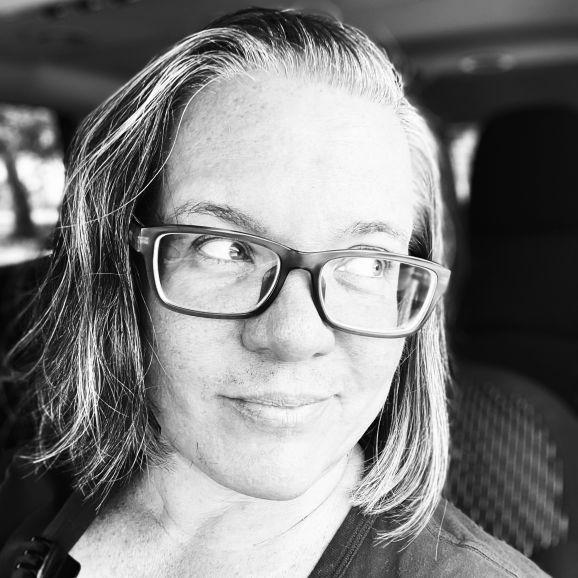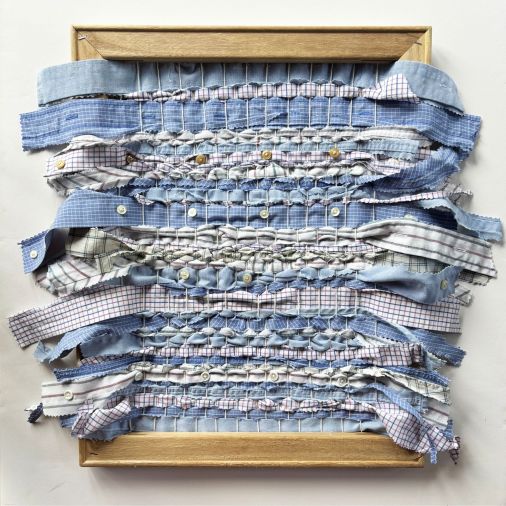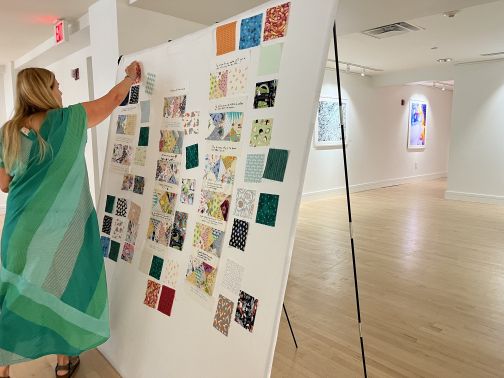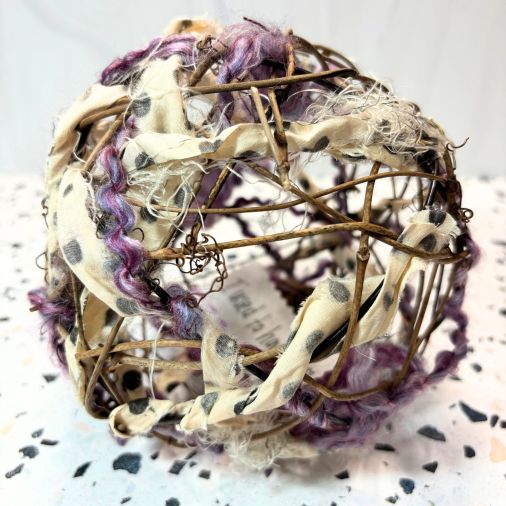of the upcoming August exhibition “Before I forget” – Raising Awareness about Dementia and Alzheimer’s at the Coral Springs Museum of Art
By Denise Marsh
Hitting Home
This assignment was different for me, but also personal as well. Doing the interview felt more like a “calling” to me and something I needed to do. When I was in my teens, following the death of my grandmother, my grandfather was diagnosed with Alzheimer’s. I can recall a heartbreaking memory of him having a Nurse’s aide who told us that he would go running in the halls of his building at night, searching for my grandmother. Later in life, a colleague at my school shared that her mother was suffering from Dementia. She used to try to “awaken” her mother’s memory by songs from her mom’s childhood. The stories go on and on. How do people cope when they need to be able to relate somehow with those that are suffering? Kristin Beck responds to this question with great sensitivity and transparency in the aforementioned exhibition, which runs from August 1st-October 5th. Let’s get to the interview.

Above: Artist Kristin M. Beck
AW: What inspired you to be a Multidisciplinary Artist? You are described as a “visual artist, weaver and writer” on your website. Was there an event or person who inspired your art?
KMB: The truth is less people inspired me and more things. I studied Graphic Design and that was my day job. I did everything from quilts to things that involved technology, but what I am most curious about in general is about how things work and the actual process of things. I get joy out of these simple things like pulling the paint brush from the paint, threading the needle through the fabric-all the simple steps involved with the actual process.
AW: Your upcoming exhibit delves into a very emotional raw subject: Alzheimer’s and Dementia. Were you or someone you know personally affected by these conditions or the disease? Can you share your story with us?
KMB: My dad has Dementia, and I took over his care. But it started to get more complicated. I started to spend more and more time with him whereas before, he was always on his own. Suddenly, he had to move to an ALF (Assisted Living Facility) and the transition was very challenging. He moved from Broward to Miami Dade, which was a big change for anyone, especially for him. As I spent more time with him, I started to notice that his memory had declined. I am not a nurse to him, meaning I don’t take care of the medical component aspect, he does have a nurse that takes care of these things. Yet, there were things that stood out to me. I noticed simple things had become an issue: like not being able to put on his sneakers correctly or putting away his clothes.
The more one-on-one time I spent with him, the harder it struck me as a “visual” artist. I could feel the decline in memory. I felt like I had a responsibility to share this experience with others. So, my big question was: How could I visually represent this cognitive decline for him, me, the “caregiver” and others in the same situation? How would I respond to show others cognitive decline and challenge? I began to observe that there was a pattern emerging -how memory and identity were being affected. Looking at them together, I identified with all of the things that I personally identified with being a part of his “identity’. For example, he was a businessman and involved with Real Estate. Ironically, my dad did not “hang on to” or relate to these “identities”. Instead, he latched to the fact that he was a Veteran and this was his main “identity” or association, Hence, all the other details in his life were not strong for him any longer. That is where the “identity” thing came out as a “theme” for me in his life that needed to be explained in my art.
I kept asking myself: How can I represent dementia visually? How can I also touch on what memories are? How do memories make us more human? So, I applied for a Grant in Broward County and was grateful to get approved. It was amazing and wonderful news for me! Because of this opportunity I was able to pursue this project with more vigor and that became the beginning of me sharing my story.
AW: What will the exhibit provide physically and emotionally for people?

Above: Kristin Beck_Weaving I, 2024_Scraps of business shirts and buttons, thread, reclaimed stretchers, and nails_20x16 inches.
KMB: Because I like to create things in different mediums; I welcome ALL of them in different ways, particularly focusing on identity and memory. For example, some of the fiber and textile work allows me to do this. One part of my exhibit has a “memory nest”. Inside a spherical nest there is one memory. I use fiber, textile, and yarn for texture. I also did another thing. I took some of his business shirts that he transitioned out of. He had a little bit of memory about him being a businessman, so I wanted to enrich this memory. I deboned all of these shirts and wanted to show the “deconstruction” of him being a businessperson. I used them to make a quilt out of his business shirts. Then I took the scraps, buttons and all and am making another weaving that will be more “business identity things.”
During the process of moving him out of the apartment, I had to clear out his whole apartment. I had to isolate a few of the objects to incorporate it into the business identity. Also, my dad has a bundle of pre-knotted ties from the seventies (laughing), and I want to display them in a way that shows a “collection” of things. All of the pieces connect to the identity theme.
Also, there will be a participatory exhibit with “stations.” One will be called “Before I forget” and there will be cards where you can write yourself a note about a memory you had when you were at the exhibit. Some people might want to share the memory with a loved one instead. There will be a choice of keeping the note or putting it into a space in the exhibit with your address to have it mailed back to you in a few months.

AW: What is the memory or take away that you want people to have from this Saturday’s event as well as the August event?
KMB: I want people to remember that memories are literally the “fabric” of our lives. The quilt will accomplish this and the sharing capabilities with the stations will further enrich the experience of identity and connection. I am so honored that people have shared their memories.
AW: Will you share the exhibit with your dad?
KMB: I want my dad to see it all at some point but also don’t want to confuse him. Plus, he is wheelchair bound so I will have to figure that out. I will probably show him some of the exhibit or rather the exhibit in pieces. I didn’t want to do it all about him, as there were other things involved. There’s an idea of a “memory chair” with Alzheimer’s and how people want to feel “at home.” I was at the Assisted Living place and there was a bittersweet memory of a woman there saying to me, “can you take me to my real home now? I want to go there.” I had to say, “I can’t do that ma’am.” But I wanted to appreciate this happening, as an artist. The exhibit allows you to take the patients on a “redirect” by setting up a faux bus stop, sort of like a simulation. The residents will feel like they are going to their “real home,” but there will be a distraction or something like a “rainstorm” along the way. Picture a bus stop with a flap and a bench and a way to post what the experience meant to them. I think it is going to be gorgeous and meaningful to people.

AW: To my understanding there is another component of the August exhibit that will be premiering this Saturday at the museum. Can you please share the information?
KMB: Absolutely. There is an on-going project that was actually a two-part session about a Memory Quilt. The first part of the “memory project” began on May 18th exploring who people are without their memories. On Saturday June 22nd there will be a community event called “memory quilt project.” This event is the culmination of last month’s event where participants wrote down memories on pieces of fabric or shared significant fabrics, like a favorite shirt. At 10:30a.m. the public can attend this free event to see the progression of the quilt and contribute more memories. The final quilt will then be incorporated and launched with the upcoming August 1st exhibition. My goal is for everyone to participate and share a particular memory on scraps of fabric. I will then fill it up with more pieces of fabric and incorporate it into one big, memory quilt. It is also important to remember that sharing is encouraged but all and any memories shared will remain anonymous for those people involved in the project. On August 1st, everyone who participated in creating the memory quilt will get to see the end product and enjoy a new component of this same theme. There will be an opening reception at the Coral Springs Museum of Art from 5:30 to 8 PM. Admission is free.
AW: If people are unable to attend either exhibit, will there be any livestreaming or virtual access to the events?
KMB: I will definitely have to look into that further as it is controlled by the City of Coral Springs. As of this point, I am not aware of that capability. However, there will definitely be a live “walk through” on Instagram.
AW: I noticed on your website, you have a little boy staring at a mural, is he your son? Is he artistic as well?
KMB: No, actually it breaks my heart (laughing) that he doesn’t even want to color! However, he plays piano and is good at math. Music with its notes and measures IS math. He also plays baseball, which is Math. He helps here and there with clay projects.
AW: Many people still have a traditional view of art/artists and sometimes avoid exhibits because they fear that they will not have the “correct” interpretation of Art. Do you have any advice for those people?
KMB: I didn’t know that people were afraid of the art. I would say that this art transcends the traditional art exhibits. This is more about connections and empathy- walking in someone else’s shoes.
AW: How can people contact you?
KMB: They can go to my website:
and my entire portfolio is all on there.
AW: In the future, do you think you will continue to stick with the same art mediums, or will you change things up at all? Is there any area of art that will allow you to expand what you already do?
KMB: I would love for my show to travel – to bring it to people in different places.
AW: Any last words or thoughts that you want people to know?
KMB: My message is that memories are the fabric of life. We have to share to spread that “wealth” and the quilt aspect is a major part of this theme. Everything from one exhibit will carry through into the next. All memories, heartbreaking thoughts, shared views are welcomed, appreciated and shared anonymously.
This weekend is supposed to be rainy – what better time to immerse yourself in a community project and be part of something very special? Kristin Beck’s “Memory Quilt” event will provide a visual forum for memories to be shared and displayed. Don’t forget to head out to the museum for the 10:30 a.m. community event. All ages and generations are welcome, and participation is optional.
***
I feel so enlightened and enriched by learning of Kristin Beck and her journey with Alzheimer’s and Dementia. As painful and sad as the subjects are, Kristin gives us hope and more importantly connection through memories. In closing, I would like to share a unique quote from Juliana Forero, Arts and Culture Programs Manager at the Coral Springs Museum of Art regarding this poignant exhibition as a whole:
“We are immensely proud to present Kristin Beck’s solo exhibition, a powerful reminder of how art can unite and inspire our community. Our past collaboration on a contemporary quilt exhibition showcased Kristin’s talent and ability to connect with audiences, and this new show continues that legacy. Through her diverse mediums and profound creativity, Kristin addresses a vital and challenging subject that resonates deeply with our shared human experience, which is the profound impact of Alzheimer’s and Dementia on families and individuals. This exhibition serves as a gathering place for our community to come together, engage, and reflect. We invite everyone to join us, experience the exhibition be part of this vibrant community dialogue.”
For more detailed information about Alzheimer’s and Dementia you can visit the following:

